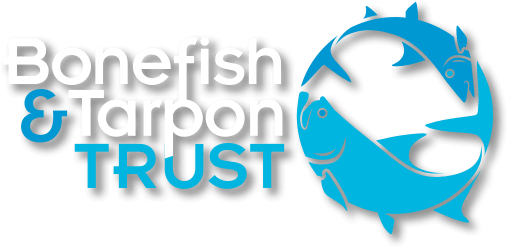The first thing that struck me as the panga coasted to a stop was the clarity of the water and the health of the seagrass. It was a new-moon low tide, and a seagrass flat along the mangrove shoreline was exposed. But a slightly deeper channel cut through the flat, and connected the mangrove creek to the open waters of the Gulf of Mexico.
Often in areas where mangrove-lined creeks deliver freshwater to coastal areas, the water is not only tannin-stained, as it was here, but is also murky. And in coastal areas where the creeks contain extra nutrients from runoff, as occurs in my home waters in Florida, the seagrass has a coating of algae. The water here was tannin but clean, and the seagrass was as clean and green as a football field. We hadn’t even begun to fish and I was impressed.
As Juan poled the panga up the creek, I stepped up on the bow and pulled fly line of the reel. The creek was a tunnel of mangroves – thick mangrove forest on each side, and a canopy of large trees overhead. The thick mangroves blocked out the blazing sun. I had to take off my sunglasses to see in the dark shadows. A tarpon rolled, then another, but Juan kept poling. I soon saw why. As we rounded the next bend, a large pool between two downed trees looked like boiling water as tarpon after tarpon rolled. A roll cast into the mix resulted in an immediate hookup, jump, and fish gone, as did the next cast. On the third cast the hook found its mark and we soon had the first tarpon boatside. For the next three days we repeated this scenario over and over.
But this wasn’t just a fishing trip. This was the beginning of the first Juvenile Tarpon Tagging Project in Mexico. A project that is a collaboration between the guides and recreational anglers of Campeche (who raised their own funds to purchase the tags used in this study) and Bonefish & Tarpon Trust, a USA-based non-profit organization that is dedicated to protection and conservation of tarpon fisheries (as well as bonefish and permit).

- BTT member Doug Jeffries, and Tarpon Town Anglers guides Juan and Fernando tag and release a juvenile tarpon
The goal of the project is to learn about the movements of these one- three-year old juvenile tarpon. Do individual tarpon stay in a single home creek, or do they move among creeks? How far offshore do they venture? Are juvenile tarpon caught and released more than once, and if so how many times? Since the fishery is comprised almost entirely of one to three year old fish, where do they go once they reach four years of age? How important is this area to the fishery for adults in the Gulf of Mexico and Caribbean?
Despite the protections to the lands that border this pristine coast, the protections given to the lands do not extend to the ocean and there are threats from the sea that are of concern to the guides and anglers who call this area home.
The project kicked off in November 2012, when guides and anglers were instructed on how to measure and tag juvenile tarpon, and the first 25 tarpon of the project were tagged. The event was graciously hosted by Tarpon Town Anglers, Ocean View hotel, and local anglers. During the kickoff event, additional projects were discussed and planned, providing a positive outlook for this important location for the region’s tarpon fishery. Everyone involved hopes that this is the first step in a long-term project to protect the juvenile tarpon of Campeche. Since the project was initiated by the anglers and guides of Campeche, it is clear that they are dedicated to conservation of the fishery and habitats. The outlook for the future is good.




